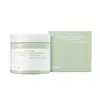What's inside
What's inside
 Key Ingredients
Key Ingredients

 Benefits
Benefits

 Concerns
Concerns

 Ingredients Side-by-side
Ingredients Side-by-side

Water
Skin ConditioningButylene Glycol
HumectantDipropylene Glycol
HumectantGlycerin
HumectantNiacinamide
Smoothing1,2-Hexanediol
Skin ConditioningPolyglyceryl-10 Laurate
Skin ConditioningChlorphenesin
AntimicrobialPolyglyceryl-10 Myristate
Skin ConditioningPanthenol
Skin ConditioningTuber Magnatum Extract
Skin ConditioningGluconolactone
Skin ConditioningArginine
MaskingPolygonum Cuspidatum Root Extract
AntioxidantThuja Orientalis Leaf Extract
AntioxidantCamellia Sinensis Leaf Extract
AntimicrobialMentha Arvensis Leaf Extract
MaskingDisodium EDTA
Sodium Hyaluronate
HumectantCitrus Aurantium Dulcis Oil
MaskingCitrus Aurantium Bergamia Fruit Oil
MaskingPinus Sylvestris Leaf Oil
MaskingResveratrol
AntioxidantEthylhexylglycerin
Skin ConditioningGlutathione
Limonene
PerfumingLinalool
PerfumingWater, Butylene Glycol, Dipropylene Glycol, Glycerin, Niacinamide, 1,2-Hexanediol, Polyglyceryl-10 Laurate, Chlorphenesin, Polyglyceryl-10 Myristate, Panthenol, Tuber Magnatum Extract, Gluconolactone, Arginine, Polygonum Cuspidatum Root Extract, Thuja Orientalis Leaf Extract, Camellia Sinensis Leaf Extract, Mentha Arvensis Leaf Extract, Disodium EDTA, Sodium Hyaluronate, Citrus Aurantium Dulcis Oil, Citrus Aurantium Bergamia Fruit Oil, Pinus Sylvestris Leaf Oil, Resveratrol, Ethylhexylglycerin, Glutathione, Limonene, Linalool
Alternatives
Ingredients Explained
These ingredients are found in both products.
Ingredients higher up in an ingredient list are typically present in a larger amount.
Butylene Glycol (or BG) is used within cosmetic products for a few different reasons:
Overall, Butylene Glycol is a safe and well-rounded ingredient that works well with other ingredients.
Though this ingredient works well with most skin types, some people with sensitive skin may experience a reaction such as allergic rashes, closed comedones, or itchiness.
Learn more about Butylene GlycolGlycerin is already naturally found in your skin. It helps moisturize and protect your skin.
A study from 2016 found glycerin to be more effective as a humectant than AHAs and hyaluronic acid.
As a humectant, it helps the skin stay hydrated by pulling moisture to your skin. The low molecular weight of glycerin allows it to pull moisture into the deeper layers of your skin.
Hydrated skin improves your skin barrier; Your skin barrier helps protect against irritants and bacteria.
Glycerin has also been found to have antimicrobial and antiviral properties. Due to these properties, glycerin is often used in wound and burn treatments.
In cosmetics, glycerin is usually derived from plants such as soybean or palm. However, it can also be sourced from animals, such as tallow or animal fat.
This ingredient is organic, colorless, odorless, and non-toxic.
Glycerin is the name for this ingredient in American English. British English uses Glycerol/Glycerine.
Learn more about GlycerinWater. It's the most common cosmetic ingredient of all. You'll usually see it at the top of ingredient lists, meaning that it makes up the largest part of the product.
So why is it so popular? Water most often acts as a solvent - this means that it helps dissolve other ingredients into the formulation.
You'll also recognize water as that liquid we all need to stay alive. If you see this, drink a glass of water. Stay hydrated!
Learn more about Water